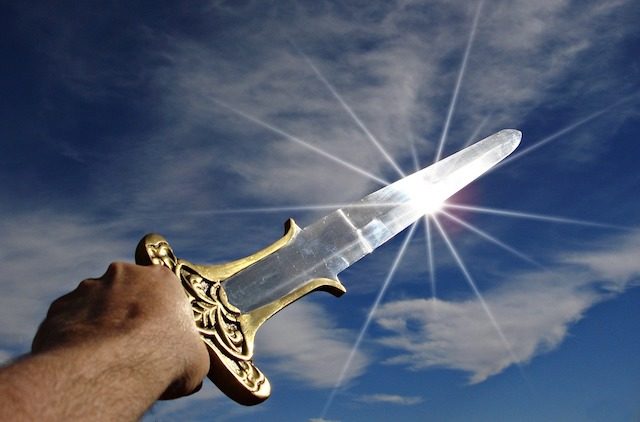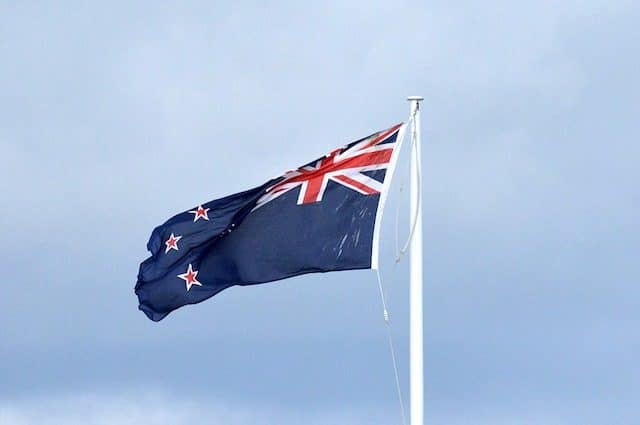The billionaires and millionaires of Silicon Valley, the new feudal lords, are apparently big-time survivalists. Understandably so. They enjoy the spoils of their bargain with the labor machine and want to hold on to what they can of the high life. Of course, with all that influence, they could save the whole world.
But no, this is how they are going to leave us, and their dignity, to perish.
10. Larry Page's Desert Island Hideaway

One of the many tech titans who fears death is Google co-founder Larry Page. His Calico Labs is working hard on his quixotic fight against death. In the meantime, however, he still has a storm to weather.
His survival plan, at least in the event of a pandemic, is to hide inon his island in Fiji . That's what he did. during COVID-19 Under the pretext of delivering medical supplies - and because he is a billionaire - he was allowed to enter the isolated (and therefore otherwise safe) country when it was closed to everyone else, flying in on his own plane from Hawaii.
Understandably, he tried to keep it a secret, forcing state media to publish his story of the visit and hiding all traces on Google. But no amount of influence could silence the disgruntled sailor who spilled the beans to the rest of the world.
9. Marvin Liao's Medieval Armory

Citing the example of Ukraine, tech investor Marvin Liao says there is always a winner at the gate. He also worries about the pandemic and the looming financial collapse. But he is prepared. Apparently, he has "put together arsenal of non-firearms and took archery lessons" so he wouldn't have to rely on ammunition.
He also espouses martial arts, knife fighting, and fitness in general. Being able to run without getting out of breath is vital, he says. But so is financial freedom. Like Jesse Eisenberg in Zombieland , Liao has several slogans that he hopes will help him survive. “Physically healthy and financially savvy” - one of them. There are also "Don't apologize, be better" and, encouragingly for the centillionaire survivalist, "No man (woman) is an island."
Liao, unlike many on this list, believes in teamwork—at least in post-apocalyptic combat. “There is strength in numbers,” he notes, “and three will almost always beat one… no matter how well trained they are.”
8. Manifest Destiny by Sam Altman

Sam Altman, a billionaire centurion and the head of OpenAI (the company responsible for the monstrous chatbot GPT-3 ), has been proud of its survival rate for several years now. Back in 2016 he told The New York Times , which collects "weapons, gold, potassium iodide, antibiotics, batteries, water, gas masks from the Israel Defense Forces and a large plot of land in Big Sur."
In another article entitled "Sam Altman's Manifest Destiny" , describes his “complete lack of interest in ineffective humans, which, unfortunately, includes most of us.” It also lists some of the scenarios he has prepared for: a deadly AI; a nuclear war over resources; and the release of a synthetic virus.
Social collapse is another one. When it happens, it will run away to New Zealand with his friend Peter Thiel.
7. Peter Thiel's New Zealand Eyesore

"Yankee, remember this. Aotearoa New Zealand is not your little refuge of last resort," the message says on the survivalist website Modern Survivalist. It's a growing sentiment in New Zealand. The island nation's self-sufficiency, temperate climate, lack of enemies, and arable land are appealing to anxious Americans. That it's here was filmed " The Lord of the Rings, is a bonus for Peter Thiel, who named his companies after the trilogy.
Investor in the field of anti-aging and cryogenic research, Thiel is afraid of death, which is understandable, given his belief in hell Not only does he want to vampirize children, he supports authoritarianism and hoped that Trump will become a dictator . He also bankrupted Gawker for exposing him. He, like expressed herself Guardian , "the human emblem of the moral vortex at the center of the market."
Naturally, he wants to continue. So he lied and bribed made his way to New Zealand and bought a city-sized chunk of the South Island. When the story hit the press, locals were outraged. Despite Thiel’s promises to invest in the country, everyone knew why he was there: to survive the collapse of Western civilisation. Fortunately, his plans for a fortress, which included a spa and theatre, were considered an eyesore by the Kiwis and rejected.
6. Bill Gates' hiding places

Bill Gates, as Ice Cube said , "bunker bitch." He's among many panicked wealthy Americans flocking to companies like Vivos, which specializes in extracting money from billionaires in exchange for apocalypse bunkers. According to Vivos founder Robert Vicino, "they have Gates has huge shelters under each of his homes, in Rancho Santa Fe and Washington."
He joins the ranks of many other narcissists - bankers, movie stars, athletes - who, according to The Hollywood Reporter , shelling out millions for protection. But it’s not just World War III that they’re worried about; what they really want to hide from is us. Among their chief fears is unrest caused by economic collapse. That tells us all we need to know about their sense of civic duty, as well as their outlook on the future. The CFO of Ultimate Bunker, another elite survival firm, said that “everyone [in these circles] thinks we’re doomed, no matter who’s elected.”
But in reality, they're doomed, no matter how much they spend. Bunkers aren't magic. All it would take is a hungry horde of veteran Marines with high bunker-busting skills.
5. Mark Zuckerberg's Recolonization of Kauai

Mark Zuckerberg is proud of his Kauai estate, but he doesn't want you to know how he got it. It wasn't always 750 acres. The original plot was apparently too small for his ironic obsession with privacy, so he forced his neighbors to sell — just as he had done before in San Francisco, Palo Alto, and Lake Tahoe. Only this time, his "neighbors" were Native Hawaiians, and their plots were lands kuleana , promised by colonists in the past. On those who resisted Zuckerberg's land grab, filed a lawsuit And to add insult to injury, there were burials on his land, forcing local residents to ask permission to visit.
He said he wanted to "put down roots" here, but some think that just means creating a refuge "in case society collapses." He clearly doesn't care about making friends with the locals; he built walls around their land and surrounded himself with henchmen.
He also did much less than nothing for many of the island's homeless residents.
4. Larry Ellison's Super Secret Master Plan

Larry Ellison, according to Bob Sutton, author of the book, No Butts Rule ", "at 25-30 more times than an asshole " than Steve Jobs. Not only was the aging software billionaire a political mega-donor, he also conquered an entire Hawaiian island for himself. His personal mantra, which he stole from Genghis Khan, is: "It's not enough for me to succeed—everyone else must fail."
For just $300 million of his $100 billion-plus, he bought 98% of Lanai, a 90,000-acre estate. As for the people who lived there, in true colonial fashion, he enslaved them overnight, becoming their boss, their landlord (on a strict 30-day lease), or both. But that’s not the point. Since COVID-19, when he moved to the island himself, changes have been gathering pace. They include Lanai’s first “longevity spa.”
Allison says he's committed to sustainability, but locals call it This "Waha" ("nonsense**"). So far, he has done nothing for the wildlife or ecology. However, there are some signs that he wants to make the island self-sufficient. He has scientists monitoring rainfall, and plans for a desalination plant and a hydroponic farm. However, these will not belong to the island’s rightful owners. Secret visits from the likes of Tom Cruise and Benjamin Netanyahu suggest that Ellison is building a retreat for the rich. We may never know. As Bloomberg notes , Ellison "has not provided the public with many details of his master plan."
3. Elon Musk's Mad Rush to Mars

Elon Musk worries about everything: climate change , artificial intelligence, population collapse , World War III… So it’s no surprise that of all the (rational) contingency plans on this list, his is the most ambitious: Migrate to space via Mars.
To be fair to the billionaire, he’s not just trying to save himself — he’s trying to save the species. In fact, he plans to put a million people on the Red Planet, 100 people per ship, over the course of a few decades. He even plans to lower the ticket price from $10 billion to $200,000. And while that’s still too much for most, he denies that it’s “an escape hatch for rich people.” There’s a “good chance you’ll die” on a mission to Mars, he says, but “the thrill is for those who… survive.”
Among other things, he imagines "pizzerias," "great bars," and the illusion of super strength in Earth's 38% gravity. "Mars would be a great place to travel," he says, - a planet of opportunities." Veteran astronauts disagree. Stanley Love, who has logged more than 300 hours in space and lived at a base in Antarctica, insists life on Mars will be "terrible". Everything would have to be rationed. People would become claustrophobic. And the low Martian gravity would also reduce their muscle mass and bone density, making colonists weaker and more prone to fractures. Even if they found their way back to Earth, they wouldn't get their lives back.
2. Jeff Bezos's impossible space dream

Like many billionaires, especially in tech, Jeff Bezos is heavily involved in life extension. One of his big investments since stepping down as Amazon CEO in 2021 was Altos Labs, (another) longevity research lab. He seems obsessed with the fact that time is running out, as he has also thrown millions at "10,000 Year Clock" inside the mountain (which some suspect is doomsday clock ).
But like Elon Musk, he’s hoping to save the planet, not just himself. Expecting humans to exhaust every viable energy source on Earth within the next few centuries, Bezos wants to send us into space. In a wild pitch based on the ideas of physicist Gerard K. O’Neill, he imagined settlements aboard cylinders orbiting the solar system. Each colony (of the millions he envisions) would be built by robots from lunar materials and launched into space by catapult. They would stretch for miles at a time to accommodate a million people, and feature alternating strips of land and windows, as well as mirrors and solar panels for power. Different colonies, he says, could have their own themes and features, such as replicas of ancient cities, wilderness areas, zero-gravity recreational colonies, and so on.
Fortunately, there are many obstacles (technology, cost, social organization, etc.); because the main problem is Bezos himself. Besides his own contribution to climate change and individualistic consumerism, his treatment of workers as Amazon CEO suggests that he doesn't really care about people. In fact, there's every reason to believe that his "colonies" will be nothing more than glorified prisons — or "worker cities in space," as NBC put it .
1. Escape of Dmitry Itskov V Matrix

Dmitry Itskov, "godfather" of the Runet, wants to celebrate his 10,000th birthday. Needless to say, the odds are stacked against him. As his manifesto puts it, “civilization faces a series of global crises… threatening the human environment and our survival as a species.” His solution, however, isn’t what you might expect after following Musk and Bezos into space; instead, he’ll throw his body overboard.
By 2045, he hopes to evolve into a holographic nanobot avatar — or at least a metaverse. Of course, this will be a gradual process. For example, he thinks we’ll see the first generation of basic robot avatars deployed in dangerous environments (e.g., emergency services, miners, etc.). Then they’ll be used as body replacements for the disabled (the paralyzed, the terminally ill, etc.). According to Itskov's schedule , we should be at this point by 2025. What follows is the transfer of individual consciousness into these bodies. In other words, by 2035, if we go back on schedule, everyone will have “the ability to achieve cybernetic immortality.” Ten years after that, we will effectively become a new species with “bodies made of nanobots… and the ability to take any shape.”
It is obvious that Itskov is a little behind schedule, so Now the accent is done on the metaverse or eternal life in the Matrix.














Оставить Комментарий